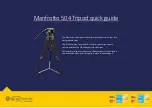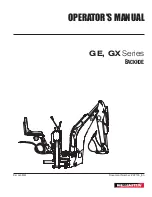
© 2017 Delta-T Devices Ltd
Page
10
7
Check Sensor is working
Air reading
◼
Hold the SM150T in air and away from other objects and take a reading using an
HH150 meter, or an HH2 meter or voltmeter or a logger with no more than 5m of
cable. In air the reading should be 0 ±4mV
(Note: the HH150 reports
under-range
if the reading is less than zero
)
Warning: Do not touch the pins
Try not to touch the pins. A typical electrostatic discharge from your
body can create a temporary offset in sensor readings for up to one
hour.
Water reading
◼
Measure the output in voltage.
In the UK the sensor will typically read about 1.5 volts in tap water (because the
salinity is typically 50mS.m-1).
The
“water reading” you get will depend on the salinity of your local water.
Note: HH150 meter indicates
“TOO WET” above 1.5V or 85% vol
.
Graph: showing the effect of salinity on SM150T sensor output when
fully immersed in water with no soil present.
0.00%
10.00%
20.00%
30.00%
40.00%
50.00%
60.00%
70.00%
80.00%
90.00%
100.00%
0.0
0.2
0.4
0.6
0.8
1.0
1.2
1.4
1.6
1.8
0
100
200
300
400
500
600
O
u
tp
u
t
(%v
ol
)
O
u
tp
u
t
(V
ol
ts
)
Conductivity EC
p
(mS.m
-1
)
SM150 fully immersed in water - as read
by HH150 and HH2 meters
Volts
% vol (mineral)
%vol (organic)
"TOO WET"
Soil moisture
readings are not
correct when no
soil is present i.e. at
100% vol.
SM150T tables and
polynomial
constants are
optimised at 220
mS.m
-1
for soil
moisture values
below 70%vol






























